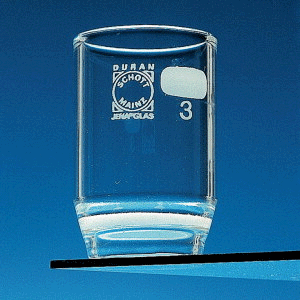
last updated:
The third step of the lidocaine project actually synthesizes the lidocaine using the anilide and diethylamine. Here are a few pointers:
It is crucial that the anilide and the glassware used in the experiment are dry. Why?
If needed, the reflux time can be shortened to about 75
minutes. The reaction mixture does have to reflux because the reaction will be very slow at low temperatures.
The reflux has to be set up in a way that the loss of the amine is
minimized, which would be observed in case of excessive boiling. After 45
minutes, the student should acquire a TLC plate to determine if the
reaction is proceeding properly (What would be a good mobile phase
here?). If the sample from the reaction
mixture displays a large amount of the unreacted anilide (keep a little of the
anilide for this step), two more equivalent of the amine should be
added before refluxing another 45 minutes.
When extracting the organic layer, the sequence of extractions is
very important: first water (to remove the ammonium salt and the unreacted diethylamine) and then 3M hydrochloric acid (to transfer the lidocaine into the aqueous layer). The sequence of events cannot be changed. Why?
The addition of KOH to the aqueous layer leads to a very strongly basic solution. The product often appears initially as a yellow oil that slowly solidifies to form a white, waxy solid when placed in an ice-bath. If this does not happen, the mixture has to be stirred vigorously to dissolve the remaining diethylamine that might interfere with the crystallization.
The product should be collected using a fritted funnel (shown below). Since the solution is very basic at this point, the filter paper slowly but steadily disintegrates during the filtration. The student often times collects a mixture of lidocaine and filter paper fibers afterwards. To clean the funnel, acetone and water should be passed through the frit from both sides to remove any solids from the frit.

The crude lidocaine is dissolved in a small amout of hexane (~8 mL). If a second layer forms at this point, the layers are separated (which one contains the product?). A small amount of drying agent is added to remove the rest of the water. After decanting the organic layer, the volume is reduced to 3-4 mL and the product is allowed to crystallize.
The final product has to be turned in to the TA for evaluation by the instructor by
February 6, 2016 at 5 pm. Make sure you label it properly. Otherwise you will not receive any credit!
Characterization:
Infrared spectroscopy, NMR spectroscopy (submit a sample dissolved
in CDCl3),
GC/MS (submit a sample dissolved in hexane)
Note: In some cases, the crude lidocaine does not crystallize. If this is the case, use the following procedure:
1. Extract the crude oil using small portions of petroleum ether (careful!).
2. Add and a spatula of char coal (ask the TA for it) and heat this mixture to a gentle boil for five minutes.
3. Filter the hot suspension using a warm glass funnel with filter paper.
4. Reduce the volume of the solvent to ~5 mL, then allow the solution to cool down to room temperature before placing it in an ice bath.
Finally, do not discard any layer before you isolated the lidocaine and identified it as such by infrared spectrum and melting point. It is not uncommon in this project that the student disposes the wrong layer!